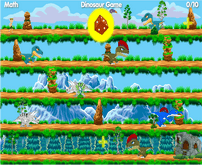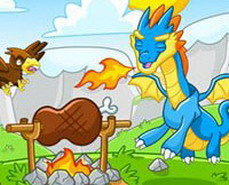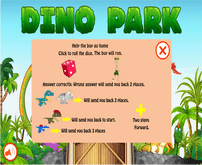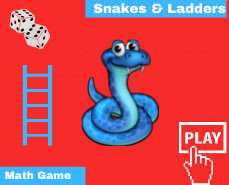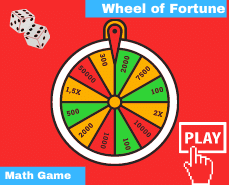Eureka Math 4th Grade Module 5: A Comprehensive Guide for Students and Teachers
Eureka Math, also known as EngageNY, is a comprehensive math curriculum designed to promote deep understanding and mastery of mathematical concepts. In the 4th grade, students dive into Module 5, which focuses on fractions as numbers on the number line. This module introduces students to new concepts and strategies that will enhance their mathematical thinking and problem-solving skills. In this article, we will explore the key topics and objectives covered in Eureka Math 4th Grade Module 5, providing valuable insights for both students and teachers.
Understanding Fractions
The first step in Module 5 is developing a solid understanding of fractions. Students learn that fractions represent parts of a whole and can be expressed using numbers and symbols. Through hands-on activities and visual representations, they explore the relationship between the numerator and denominator, identifying proper fractions, improper fractions, and mixed numbers.
Representing Fractions on a Number Line
Building upon their understanding of fractions, students move on to representing fractions on a number line. This visual representation helps them grasp the concept of fractions as points on a continuous scale. By placing fractions accurately on the number line, students develop a deeper understanding of fraction magnitude and the relationship between fractions.
Comparing Fractions
Module 5 introduces students to the concept of comparing fractions. They learn various strategies to determine whether one fraction is greater than, less than, or equal to another. Through activities and discussions, students explore the role of numerators and denominators in comparing fractions and develop strategies such as finding common denominators or using benchmark fractions.
Equivalent Fractions
Understanding equivalent fractions is a crucial skill in Module 5. Students learn that different fractions can represent the same amount or part of a whole. They explore various methods, including visual models and number line representations, to identify and generate equivalent fractions. This knowledge lays the foundation for future concepts such as adding and subtracting fractions.
Adding and Subtracting Fractions
Module 5 delves into the addition and subtraction of fractions. Students develop strategies to add and subtract fractions with like denominators and extend their understanding to fractions with unlike denominators. Through real-world contexts and problem-solving activities, students apply their knowledge of equivalent fractions and develop a conceptual understanding of operations with fractions.
Multiplying Fractions by Whole Numbers
Another essential topic in Module 5 is multiplying fractions by whole numbers. Students learn to interpret multiplication as scaling or resizing quantities and explore various strategies to multiply fractions efficiently. Through hands-on activities and visual representations, they deepen their understanding of multiplying fractions by whole numbers and its applications in real-life situations.
Fraction Word Problems
Module 5 provides ample opportunities for students to engage in fraction word problems. They apply their knowledge of fractions to solve contextual problems, developing critical thinking and analytical skills. Students learn to analyze the given information, represent it using mathematical notation, and arrive at logical solutions through a step-by-step problem-solving approach.
Review and Practice
Regular review and practice are crucial for reinforcing concepts learned in Module 5. Students engage in various activities, including worksheets, math games, and group discussions, to consolidate their understanding of fractions and related operations. Teachers play a vital role in providing targeted feedback and guiding students towards mastery.
Applying Fractions in Real-Life Situations
Module 5 emphasizes the application of fractions in real-life situations. Students explore scenarios where fractions are encountered, such as measuring ingredients in recipes, calculating distances on maps, or determining proportions in artwork. This application-based approach helps students understand the relevance of fractions in everyday life and strengthens their problem-solving abilities.
Building Mathematical Fluency
Throughout Module 5, students continually work towards building mathematical fluency. They practice skills such as mental math, estimation, and quick calculations to enhance their overall mathematical proficiency. Fluency exercises, timed drills, and interactive games provide opportunities for students to develop speed, accuracy, and flexibility in their mathematical thinking.
Enhancing Problem-Solving Skills
Problem-solving is an integral part of Eureka Math. In Module 5, students tackle a variety of problem-solving tasks that require critical thinking, logical reasoning, and application of mathematical concepts. By engaging in open-ended and complex problem-solving scenarios, students develop a growth mindset and become confident problem solvers.
Collaborative Learning in the Classroom
Eureka Math promotes collaborative learning in the classroom. Module 5 encourages students to work together, share their strategies, and engage in mathematical discussions. Collaborative activities, such as group projects and peer tutoring, foster a positive learning environment where students can learn from one another, develop communication skills, and gain new perspectives.
Engaging Resources and Activities
To support teachers and students, Eureka Math provides a wide range of engaging resources and activities. These include manipulatives, interactive tools, online platforms, and printable materials. These resources cater to diverse learning styles and ensure that students have access to multiple representations of mathematical concepts, promoting a deeper understanding of the content.
Assessing Progress and Mastery
Regular assessments are conducted throughout Module 5 to monitor student progress and assess mastery of the concepts. Formative assessments, quizzes, and exit tickets help teachers identify areas of strength and areas that need further reinforcement. This data-driven approach enables teachers to provide targeted interventions and support students on their mathematical journey.
Conclusion
Eureka Math 4th Grade Module 5 provides a comprehensive and engaging learning experience for students. By exploring fractions as numbers on the number line and delving into operations with fractions, students develop a strong foundation in mathematical thinking. The module emphasizes real-life applications, problem-solving skills, and collaborative learning, empowering students to become confident mathematicians.
Frequently Asked Questions
1. How can I support my child's learning in Eureka Math 4th Grade Module 5? To support your child's learning, create a conducive study environment, encourage regular practice, and engage in discussions about math concepts. You can also seek additional resources, such as online tutorials or practice worksheets, to provide extra support.
2. Are there any online resources available for Eureka Math 4th Grade Module 5? Yes, Eureka Math provides online platforms and resources that complement Module 5. These platforms offer interactive activities, video lessons, and practice exercises to reinforce the concepts covered in the module.
3. How can teachers incorporate real-life examples into Module 5 lessons? Teachers can incorporate real-life examples by relating math concepts to everyday situations. For example, they can use recipes, measurements, or artwork to demonstrate the application of fractions in real-life scenarios, making the lessons more relatable and engaging for students.
4. What strategies can students use to compare fractions? Students can use strategies such as finding common denominators, converting fractions to decimals, or using benchmark fractions to compare fractions. Visual models, such as fraction bars or number lines, can also aid in comparing fractions effectively.
5. How does Module 5 prepare students for future math concepts? Module 5 lays a solid foundation for future math concepts, particularly in relation to fractions. The skills and strategies learned in this module, such as equivalent fractions and operations with fractions, serve as building blocks for more advanced topics like multiplying and dividing fractions in higher grades.

